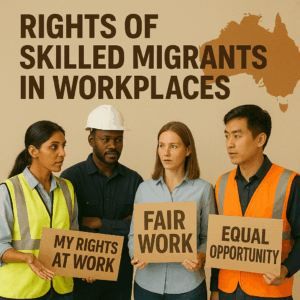Navigate Australia’s 2025 skilled migration with confidence. Discover how partner points and regional bonus points work, eligibility, maximization tips, and get all your questions answered.
Introduction
In 2025, Australia’s competitive skilled migration landscape means that every point on your visa application counts more than ever. Many applicants find themselves just a few points short of the invitation cut-off. Strategic use of partner points and regional bonus points can bridge that gap — often deciding who secures permanent residency. This in-depth FAQ unpacks the rules, requirements, and smart strategies for maximizing your partner and regional points, giving you a critical advantage in Australia’s points-tested visas.
Understanding the Australian Skilled Migration Points System
Australia’s points-tested skilled visas — including the Skilled Independent (subclass 189), Skilled Nominated (190), and Skilled Work Regional (Provisional) (491) — use a transparent and strictly merit-based selection process. Each applicant submits an Expression of Interest (EOI) via SkillSelect and is ranked by their points score at the time of invitation, not at the time of EOI lodgement.
Points Factors:
- Age: 25–32 years earns the highest (30 points); drops for older applicants; no points after 45.
- English Proficiency: Competent (IELTS 6/6/6/6) is mandatory; Proficient-English gets 10 points; Superior-English earns 20.
- Work Experience: Australian and skilled overseas work are counted separately, up to a max of 20 and 15 points respectively.
- Qualifications: Degrees, Australian study requirements, doctorate/masters by research (STEM), and completion of a Professional Year in Australia all carry points.
- State Nomination: 5 points for 190; 15 points for 491 regional sponsorship or nomination, plus regional Australian study bonus.
- Partner Points: 5 or 10, depending on your partner’s skills, English, and nomination alignment.
Minimum Points Required: 65, but practical EOI cut-offs in 2025 are often in the range of 75–85 for popular occupations due to high competition and limited seats.
Partner Points Australia 2025: Claiming, Rules, and Frequently Asked Scenarios
The Three Categories of Partner Points
- 10 Points – Skilled Partner
- Partner is included as a secondary applicant
- Is under 45 years of age
- Holds Competent English (IELTS 6 in each band, PTE 50, and equivalents)
- Has a positive skills assessment for an occupation on the same relevant list as the main applicant (e.g., MLTSSL for 189 visa)
- Occupation needs to be eligible, and occupation lists can change, so check at the time of invitation
- 5 Points – English-Only Partner
- Partner has Competent English as above
- Cannot/did not provide a positive skills assessment
- No requirement for an eligible occupation
- 10 Points – Single Applicants or Partner is PR/Citizen
- You are single (unmarried/de facto at EOI and at invitation)
- Your partner is an Australian citizen or permanent resident
- This also reflects policy aims of rewarding applicants who won’t add to the temporary or long-term migration intake for partners
Important:
- You can claim only one set of partner points (maximum 10) — no doubling up.
- Eligibility is tested at the time of invitation, so relationship breakdowns, changes in partner’s citizenship status, or skill assessment expiry after EOI but before invitation can affect your claim.
Extra Detail: How to Secure 10 Partner Points
To claim the full 10 partner skill assessment points in Australia in 2025:
- Ensure your partner completes a skills assessment with a positive result — this can be from more than 3 years before the invitation, as skills assessments do not “expire” for partner points purposes.
- Your partner’s nominated occupation must appear on the same relevant skilled occupation list as yours (e.g., MLTSSL for 189), and their skills assessment must match that occupation at the time of invitation.
- Both principal applicant and partner must have Competent English as minimum.
- Remember age — partner must be under 45 at invitation.
- If your partner only meets the competent English test, claim 5 points instead.
Documents required:
- Partner’s skills assessment result
- English proficiency test result (IELTS/PTE etc.)
- Evidence of relationship (marriage certificate or de facto status)
- Identity documents
Regional Bonus Points: How to Maximize Your Score and Benefits
The Two Key Regional Pathways
- State/Territory Nomination or Family-Sponsorship for 491 Visa
- +15 points: If you are nominated by a state/territory government or sponsored by an eligible Australian family member living in a designated regional area.
- “Regional” in Australia excludes Sydney, Melbourne, and Brisbane — almost all other centers count.
- Regional Study Bonus
- +5 points: If you complete at least 2 academic years of study in a designated regional area (can be any course; does not need to relate to your nominated occupation).
Pathway to Permanent Residency:
After living and working in regional Australia (and meeting income and residency requirements), 491 holders can apply for the 191 visa — a pathway to PR.
Rules and Compliance:
- Regional points are locked in at invitation. You can’t move to a city before meeting PR eligibility.
- Postcode and employer checks are common to ensure real regional residence.
- State nomination (190/491) also involves commitment to living and working in the nominating state for a specified duration.
Real-World Impact
- The 15-points regional nomination often means regional applicants receive invitations sooner, with lower competition, and sometimes at lower scores, compared to city-based applicants.
- Graduates of regional universities—such as those in Adelaide, Hobart, Darwin, or regional Queensland—gain both extra points and sometimes state sponsorship advantages.
Common Policy Scenarios
- If you study in a regional area and obtain a 491 nomination, you can receive both sets of points (total +20: 15+5) for your EOI.
- Some states preference certain occupations or graduates from their own institutions for sponsorship.
- Monitoring is strict: moving before PR may jeopardize your pathway and access to future sponsorship.
Policy Changes, Strategic Tips, and Pitfalls for 2025
Key 2025 Changes & Their Impact
- Higher Cut-off Scores: Many EOI invitations now go to applicants with scores above 80.
- More Emphasis on English: English test scores can increase or decrease your overall eligibility in 2025; partners’ English is under more scrutiny.
- Narrower State Nomination Lists: States have refined occupation lists (fewer occupations in Sydney/Melbourne, more in regional centers).
- Regional Emphasis Intensified: The government is actively prioritizing migration to smaller cities and regions. This drives up demand for regional points and makes regional bonuses a must-have for many applicants.
Strategic Advice
- Plan Early for Partner Points: If your partner qualifies for skilled points, obtain their skills assessment before EOI submission. If in doubt, ensure at least competent English is up to date.
- Build a Case for Regional Points: Study or work regionally if possible. If you are already in Australia, consider regional employment or further study to secure extra points.
- Check Occupation List Alignment: Your partner’s occupation must match the relevant visa list at invitation, not only at EOI. Watch for changes in the lists.
- Keep Documents Up-to-Date: Expired or invalid English tests and skills assessments can mean lost points or failed applications.
- Disclose Everything: Inconsistent information about your relationship or residence can result in refusal or even a ban.
Points Breakdown Table: Partner and Regional Bonuses
| Factor | Requirement | Points |
|---|---|---|
|
Skilled Partner |
Skills assessment + competent English + occupation on eligible list + <45 |
10 |
|
English-only Partner |
Competent English + no skill/occupation match |
5 |
|
Single/Aus Citizen Partner |
You’re single, or partner is Aus citizen/PR | 10 |
|
491 Regional Nomination |
State/territory nomination or family sponsorship for 491 |
15 |
|
Regional Study |
2 academic years study in designated regional area |
5 |
| 190 State Nomination | State/territory nomination for subclass 190 visa |
5 |
Increase your Chance
Partner points and regional bonus points play decisive roles in Australia’s skilled migration program in 2025. They can boost your EOI score, put you ahead of the competition, and unlock a faster pathway to permanent residency — but only if you understand the policies, timelines, and eligibility requirements in detail. Plan early, keep your documents current, and adapt to changes in policy and occupation lists for the best chance of migration success.

